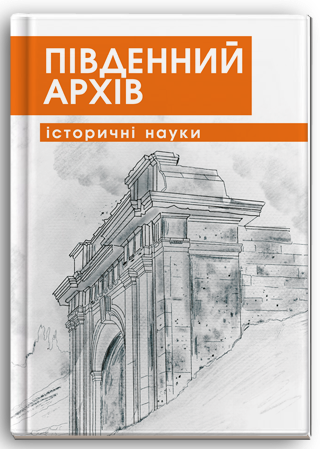DEVELOPMENT OF THE CAROLINGIAN-TYPE SWORD IN TERRITORY OF UKRAINE
DOI:
https://doi.org/10.32999/ksu2786-5118/2025-50-5Keywords:
military history, trade and economic relations, weaponry, history of Ukraine, metallurgy, burial rites, ScandinaviansAbstract
This paper explores the historical development of the Carolingian-type European sword, which gained prominence during the Early Middle Ages (8th–11th centuries). Particular attention is given to the analysis of the structural features of Carolingian swords, as well as their symbolic and functional roles within military and cultural contexts.The purpose of the study is to examine the transformation of the sword as a pivotal military and socio-cultural phenomenon of the Early Middle Ages, with a focus on intercivilizational contacts between the West and the East. The article includes an analysis of the archaeological find known as the “Sword of Sviatoslav”, which has become a subject of ongoing scholarly debate. The study also addresses the sword’s role as a marker of social prestige and authority, particularly in the context of funerary practices, which underscore its symbolic significance in the warrior culture of the period. To achieve its objectives, the research employs contemporary methodological frameworks, integrating both general and specialized academic approaches. The synthetic nature of the methodology has made it possible to draw conclusions relevant to the broader discourse on the evolution of long-bladed weaponry in the Early Middle Ages, especially the Carolingian sword. Research results. This paper traces the evolution of the European sword from the Roman spatha to the Carolingian type, interpreting it as a key element in the military and social history of the era.Through the examination of structural, functional, and symbolic characteristics, the study reveals the sword’s importance in warfare, cultural traditions, and ritual practices. Conclusions. Archaeological materials and written sources allow the sword to be interpreted as a symbol of authority, social status, and spiritual identity, while its presence in burial contexts signifies prestige and sacral meaning. The research emphasizes the sword’s cultural relevance among warrior elites in the territory of present-day Ukraine during the Early Middle Ages and outlines prospects for further scholarly inquiry into this subject.
References
Авдусин Д. Гнёздовская экспедиция. Краткие сообщения Института истории материальной культуры. Москва. 1952. Вып. XLIV. С. 93–104.
Андрощук Ф. Від вікінгів до Русі. Національний музей Історії України. Київ. 2022. 212 с.
Антрощук Ф. Мечи викингов. Национальная академия наук Украины, Институт археологии. вид. Простір. Київ. 2013. 712с.
Аркас М. Історія України-Руси. вид. Маяк. Одеса. 1994. 389 с.
Беовульф, Старшая Эдда, Песнь о Нибелунгах. Худ. Литература. Москва. 1975. 768 с.
Грушевський М. Ілюстрована історія України. Київ-Львів 1913р. репринтне видання ІСЕ-України. Київ. 1990. 525 с.
Довженко В. Військова справа Київської Русі. Видавництво Академії наук Української РСР. Київ. 1950. 86 с.
Кирпичников А. Мечи и сабли IX–XIII вв. Археология СССР свод археологических источников под общей редакцией академика Б. Рыбакова. Древнерусское оружие. изд. Наука. Москва. 1966. выпуск первый. 143 с.
Коба О., Коваль О., Клинкова зброя VIII–Х ст. на території давньої Русі. Археологія і давня історія України. ПП Видавництво Стародавній Світ. Київ. 2013. випуск 10. С. 210–2016
Козак М. Торгівля зброєю на Русі. журнал Актуальні проблеми. Харків. 2018. випуск 21. С. 63–70
Крип’якевич І., Гнатевич Б., Стефанів З., Думін О., Шрамченко С. Історія українського війська (від княжих часів до 20-х років XX ст.). Упорядкування Б. Якимовича. «Світ». Львів. 1992. 4-те, змін. і доповн. 713 с.
Кузовков В., Смирнов О., Смирнов Л. Данська присутність в акваторії Дніпро-Бузького лиману у 9–13 століттях: постановка питання. Емінак – Науковий щоквартальник. Миколаїв. 2024. No1(45). С. 179–202
Остапенко М., Нефьодов В. Меч доби Святослава на шляху із варяг у греки. Підводні дослідження: Археологія, історія. Дайвінг. Інститут археології НАН України. Київ. 2013. вип. 5. С. 51–63.
Пивоваров С., Калініченко В., Ільків М. Нові знахідки елементів клинкової зброї з Чорнівського городища ХІІІ ст. Вісник Центру буковинознавства. Збірник наукових праць науково-дослідного Центру буковинознавства Чернівецького національного університету імені Юрія Федьковича. Технодрук. Чернівці. 2017. Т. 1. С. 5–14.
Повість врем’яних літ. Літопис за Іпатіївським списком. Радянський письменник. Київ. 1990. 558 с.
Терський С., Стрельченко О., Войнаровський В. Нові знахідки ранньосередньовічної зброї у р. Західний Буг. Вісник Національного університету Львівська політехніка. № 809: Держава та армія. Львів. 2014. С. 7–12.
Шумський І. Норманське розселення та його вплив на суспільний устрій у західній Європі та Київській Русі. Jurnalul juridic naţional: teorie şi practică. Republica Moldova. 2018. №5 (33). С. 33–36.
Яворницький Д. Історія запорізьких козаків. Т1. Вид. Світ. Львів. 1990. 316 с.
Янин В. Денежно-весовые системы русского средневековья: домонгольский период. изд. Московского университета. Москва. 1956. 204 с.
Bishop M. The Spata, the roman long sword. Bloomsbury Publishing Plc. Oxford. 2020. 80 p.
Böheim W. Handbuch der Waffenkunde. Das Waffenwesen in seiner historischen Entwickelung vom Beginn des Mittelalters bis zum Ende des 18. Wiesbaden: Fourier Verlag. Wiesbaden. 1985. 570 p.
Bromwich R., Simon Evans D. Culhwch and Olwen. An Edition and Study of the Oldest Arthurian Tale. University of Wales Press. Cardiff. 1992. 316 p.
Clements J., Hertz B. The Myth of Thrusting versus Cutting Swords. Atlanta. 2022. URL: https://www.thearma.org/essays/thrusting_vs_cutting.html (дата звернення 30. 12. 2024)
Haywood J. Northmen: The Viking Saga 793–1241. London. Bloomsbury. London. 2020. 650 p.
Hrómundar Saga Gripssonar. Translated by Gavin Chappell. 2011. URL: https://www.germanicmythology.com/FORNALDARSAGAS/HromundarSagaGripssonChapell.html (дата звернення 28.12.2024)
Jakobson M. Krigarideologi och vikingatida svardstyplogy. Ph Stokholm. Stokholm. 1992. 305p.
Kwaśniewicz W. Encyklopedia dawnej broni i uzbrojenia ochronnego. Wydawca: Bellona. Warszawa. 2017. 600 p.
Nowakowski A. Uzbrojenie Średniowieczne w Polsce (na tle środkowoeuropejskim). Uniwersytet Mikołaja Kopernika. Toruń. 1991. 146 p.
Oakeshott E. The Archaeology of Weapons: Arms and Armour from Prehistory to the Age of Chivalry. Boy- dell Press. Martlesham. 1960. 360 p.
Petersen J. De Norske Vikingesverd: En Typologisk-Kronologisk Studie Over Vikingetidens Vaaben. Kristi- ania. I komission host Jacob Dabwad. Oslo. 1919. 232 p.
Withers H.J. The World Encyclopedia of Swords and Sabres: An authoritative history and visual directory of edged weapons from around the world, shown in more than 800 outstanding photographs. Lorenz Books. Dayton. 2024. 256 p.
Zeno-Karl P. Spada Şi Sabia Medievala in Transilvania Şs Banat (secolele IX–XIV). București. 1999. URL: https://magazines.ulbsibiu.ro/arheologie/publicatii/carti/sssmitsb/II.m (дата звернення 28.12.2024)



